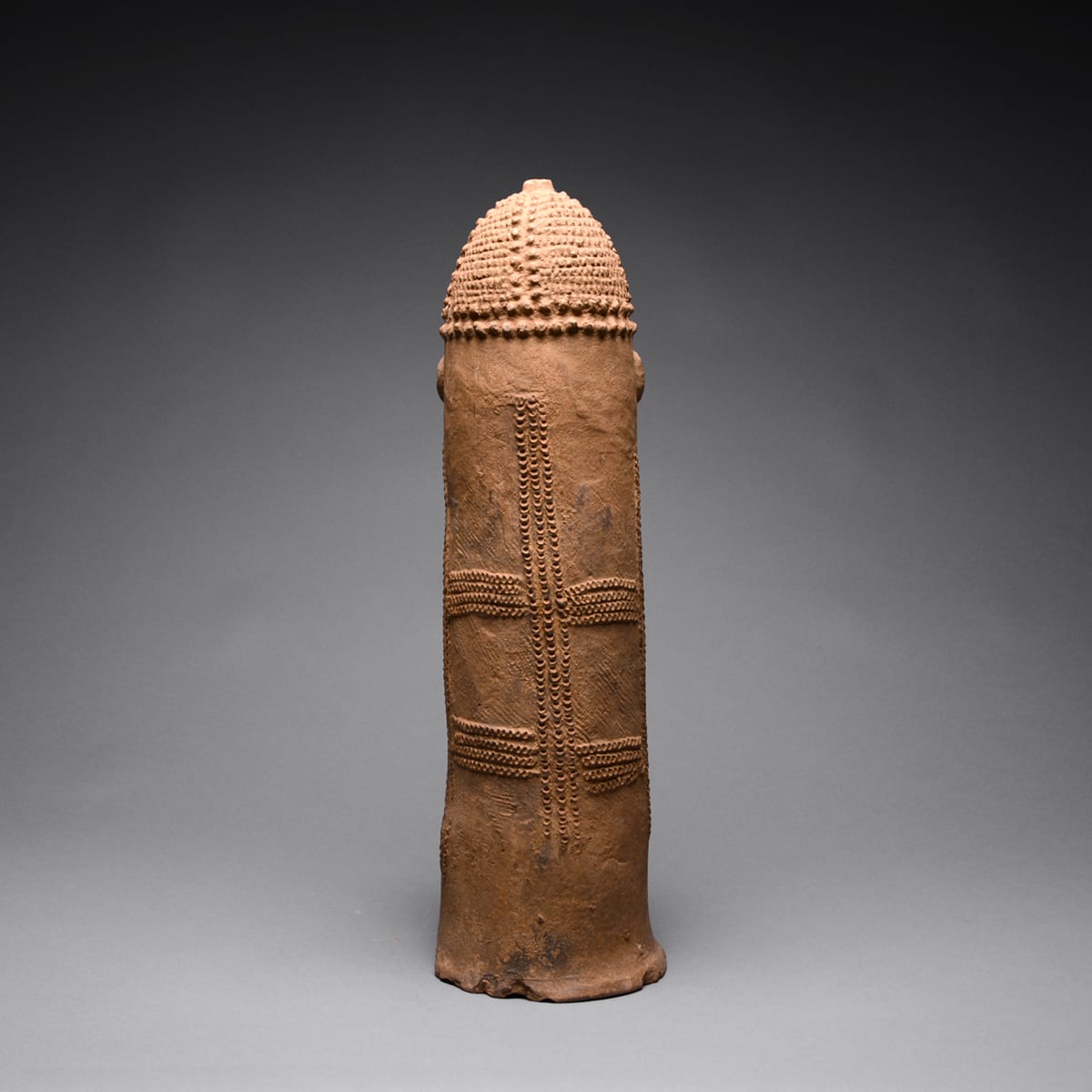Bura Phallic Sculpture, 300 BC to 1100 AD
300 BC to 1100 AD
52.1 x 13.3 cm
20 1/2 x 5 1/4 in
20 1/2 x 5 1/4 in
PH.0244
Further images
This object was created by the Bura culture. The Bura culture refers to a set of archeological sites in the lower Niger River valley of Niger and Burkina Faso. More...
This object was created by the Bura culture. The Bura culture refers to a set of archeological sites in the lower Niger River valley of Niger and Burkina Faso. More specifically, the Iron-Age civilization exemplified by the Bura culture was centered in the southwest portion of modern- day Niger and in the southeast part of contemporary Burkina Faso. The Bura are a true paradox: almost nothing is known of this shadowy Nigerian/Malian group. They appear to have originated in the first half of the first millennium AD, although the only archaeologically- excavated site (Nyamey) dates between the 14th and 16th centuries. They are contemporary with – and probably related to – the Djenne Kingdom, the Koma, the Teneku and a satellite culture known as the Inland Niger Delta. Insofar as can be ascertained, the Bura share certain characteristics with these groups; for our purposes, these include extensive ceramic and stone sculptural traditions. The Bura appear to have been sedentary agriculturists who buried their dead in tall, conical urns, often surmounted by small figures.
The piece is phallus in shape, although the surface of the sculpture reveals a human face flanked by ears protruding from its sides. Its head and body are greatly adorned with small incisions and reshaped clay, creating simplistic details. Their best-known art form is radically reductivist anthropomorphic stone statues, with heads rendered as squares, triangles and ovals, with the body suggested by a columnar, monolithic shape beneath. Phallic objects are also known; some phallomorphic objects may have been staffs, perhaps regalia pertaining to leaders of Bura groups. Many pieces of the Bura culture are also believed to have been found in burials, perhaps implying an importance that would have been linked to social standing and status.
The piece is phallus in shape, although the surface of the sculpture reveals a human face flanked by ears protruding from its sides. Its head and body are greatly adorned with small incisions and reshaped clay, creating simplistic details. Their best-known art form is radically reductivist anthropomorphic stone statues, with heads rendered as squares, triangles and ovals, with the body suggested by a columnar, monolithic shape beneath. Phallic objects are also known; some phallomorphic objects may have been staffs, perhaps regalia pertaining to leaders of Bura groups. Many pieces of the Bura culture are also believed to have been found in burials, perhaps implying an importance that would have been linked to social standing and status.







